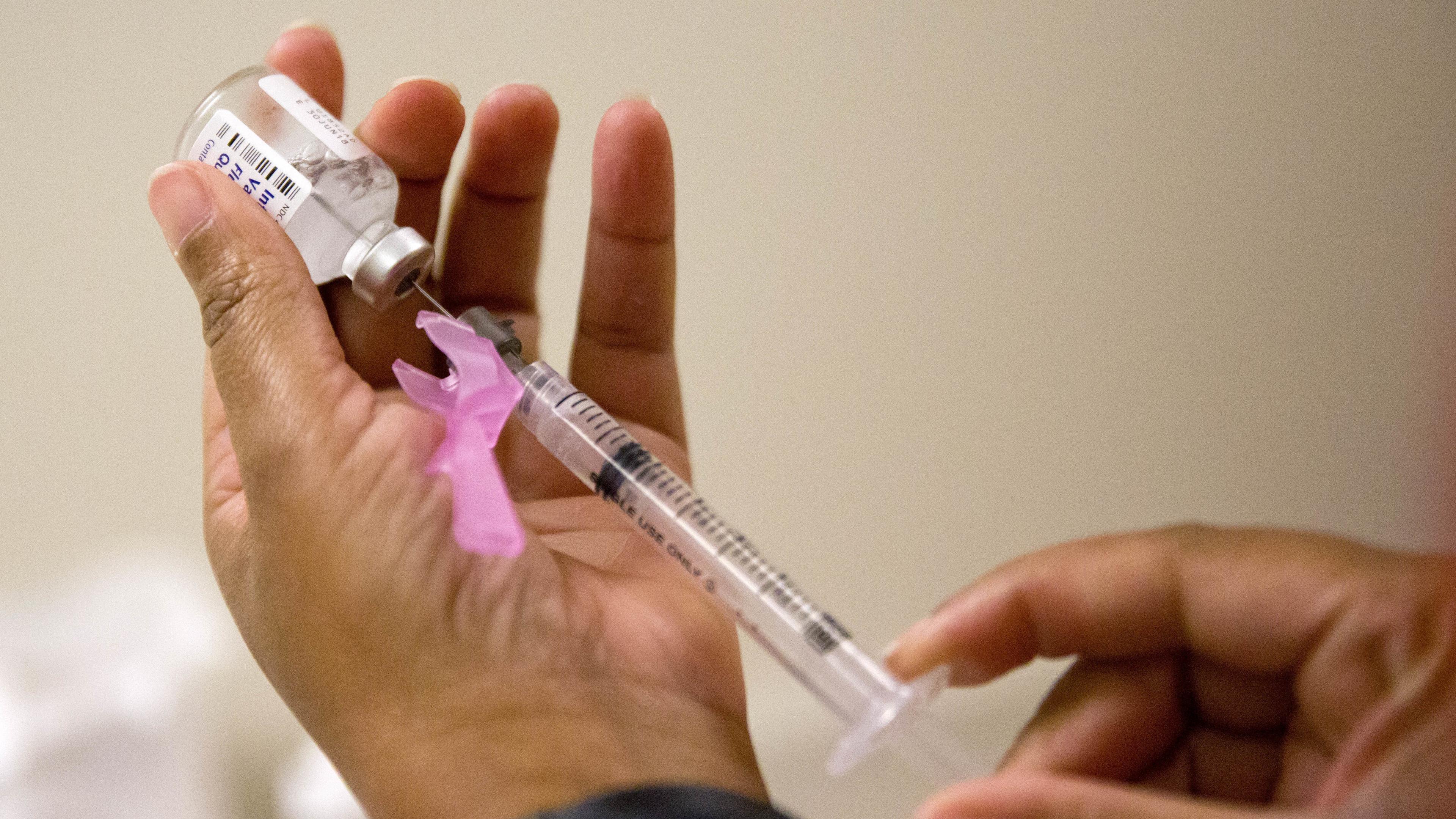
Scientists spend a lot of time trying to predict how mild or severe a flu season will be and this year, with a real fear of a “twindemic” where hospitals are overwhelmed by the combination of COVID-19 and the flu, there’s a lot riding on those predictions.
So far, Coloradans don’t seem to be putting off their shots, and that may help prevent widespread flu while COVID-19 is still moving through the population. Flu vaccinations are up nearly 70 percent from this time last year and the uptick in vaccinations isn’t an accident.
State health officials distributed the vaccine early this year and they’ve launched an all-out publicity campaign to urge people to get vaccinated. Gov. Jared Polis invited reporters to watch him get his flu shot Wednesday as part of that.
Public health officials are also counting on the pandemic to make people more fearful of getting sick.
“Today with COVID in our community, the fact that we see people who are getting sick, we say, ‘Boy, I should really also get that flu shot,’” said Eric France, a physician and the chief medical officer for the Colorado Department of Health and Environment.
Vaccination rates may be one indication of how a flu season will play out, but planning, including some educated guesswork, begins nearly a year before people start showing up at clinics for their shots.
It starts with a group of scientists and doctors around the world who work with the World Health Organization to determine which strains of the flu will go into the vaccine. They collect viral specimens and determine the most prevalent strains that are circulating and judge what might happen down the road.
The group has to make separate decisions for the Southern and Northern Hemispheres where winters are on opposite sides of the calendar.
"We meet once and the end of February to make recommendations for the upcoming Northern Hemisphere flu season,” said Dr. Richard Webby of St. Jude Children’s Research Hospital in Memphis, Tenn., which is part of the WHO’s Collaborating Centres for Influenza. “And we finished a meeting in September where we looked at what strains should go on and into the Southern hemisphere flu vaccine.”
Webby describes it as a circle where one hemisphere informs the other about the next season.
Researchers have to make the call on what strains to use about seven or eight months before each hemisphere’s winter flu season so they can manufacture the vaccine in time to be ready to distribute.
Dr. Dylan Luyten of Swedish Medical Center in Englewood calls the process an “imperfect crystal ball.”
“The flu strains continue to mutate, so you can have increasing virulence across a flu season,” Luyten said. “At different times across a flu season, different strains may predominate and be more or less, virulent. And what, what hits hard in Australia may be different than what hits hard in North America.”
Webby said he believes the strains in this year’s flu vaccine are fairly well-matched to what researchers anticipated.
Scientists can also look to countries in the Southern Hemisphere like Australia — which are just wrapping up their winter — to see how mild or severe a flu season might be.
“If you look at what's actually gone on in the Southern Hemisphere winter season, there has been really, really low influenza activity,” Webby said.
He said one clear reason for that is behavior related to the pandemic.
“Social distancing and mask-wearing seem to do a pretty good job against COVID-19, but also seem to work maybe even better against influenza and some of these other more cold-like viruses,” Webby said.
At the same time, health experts caution that this year in particular, Australia and the U.S. aren’t apples to apples comparison.
“During their flu season, they were very locked down,” said Dr. Jean Kutner, chief medical officer at UC Health. “You are less locked down here at the time that flu is set to come and we’re headed indoors.”
Webby says some countries in the Southern hemisphere — in South America — might be more predictive for the US. He says, like us, they’ve had a more lax approach to masks and social distancing.
“But even if we look at countries that haven't done such a good job at controlling COVID-19, even their flu seasons have been low in the Southern hemisphere,” Webby said. “If you're an optimist, it's actually telling us, maybe we won't have much flu activity.”
Health experts say the lack of international travel this year compared to years past will also help limit the spread of the flu and may lessen the impact on Coloradans.









